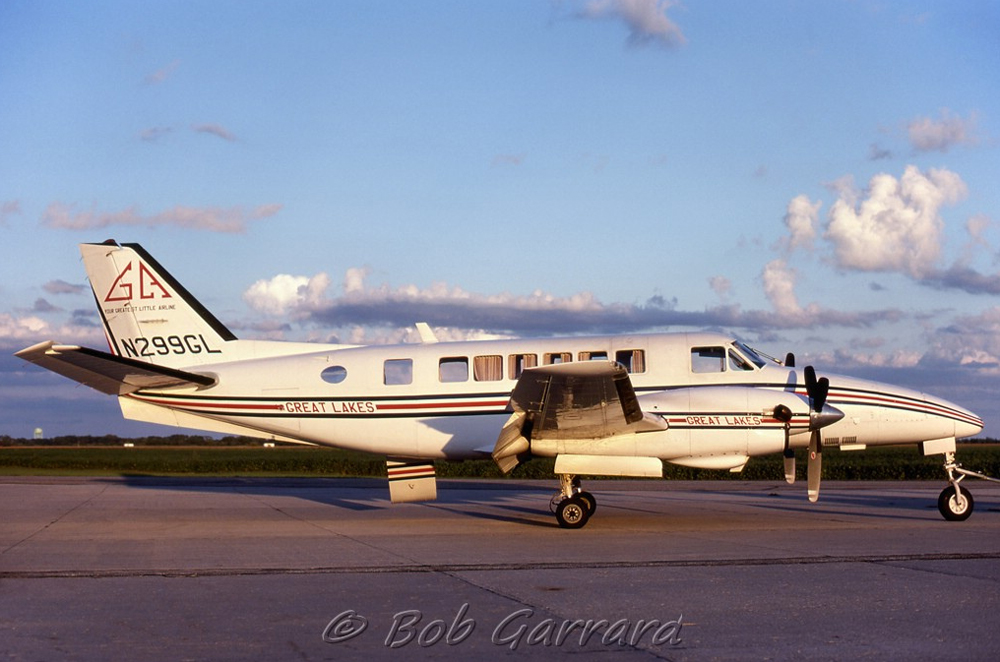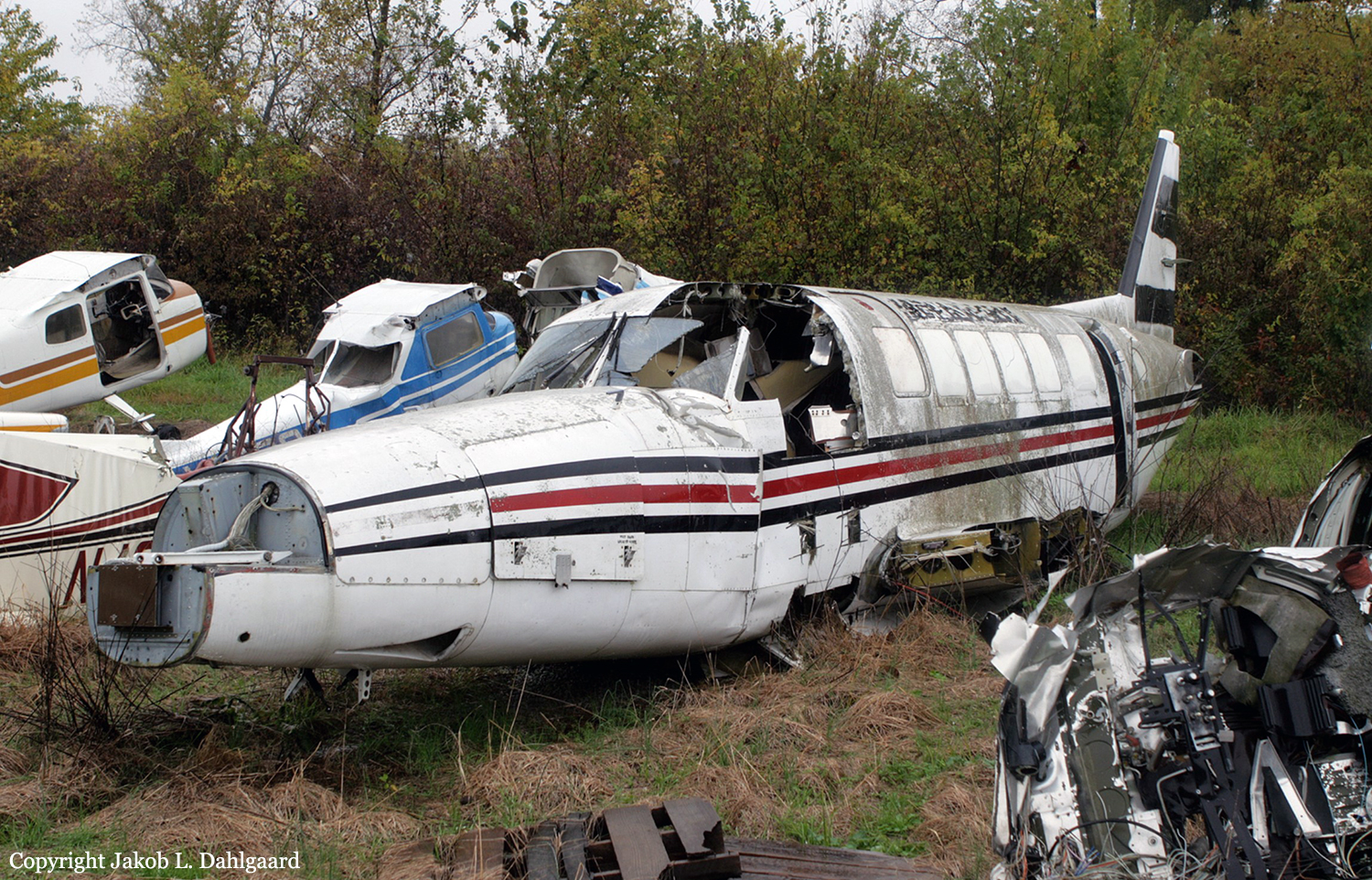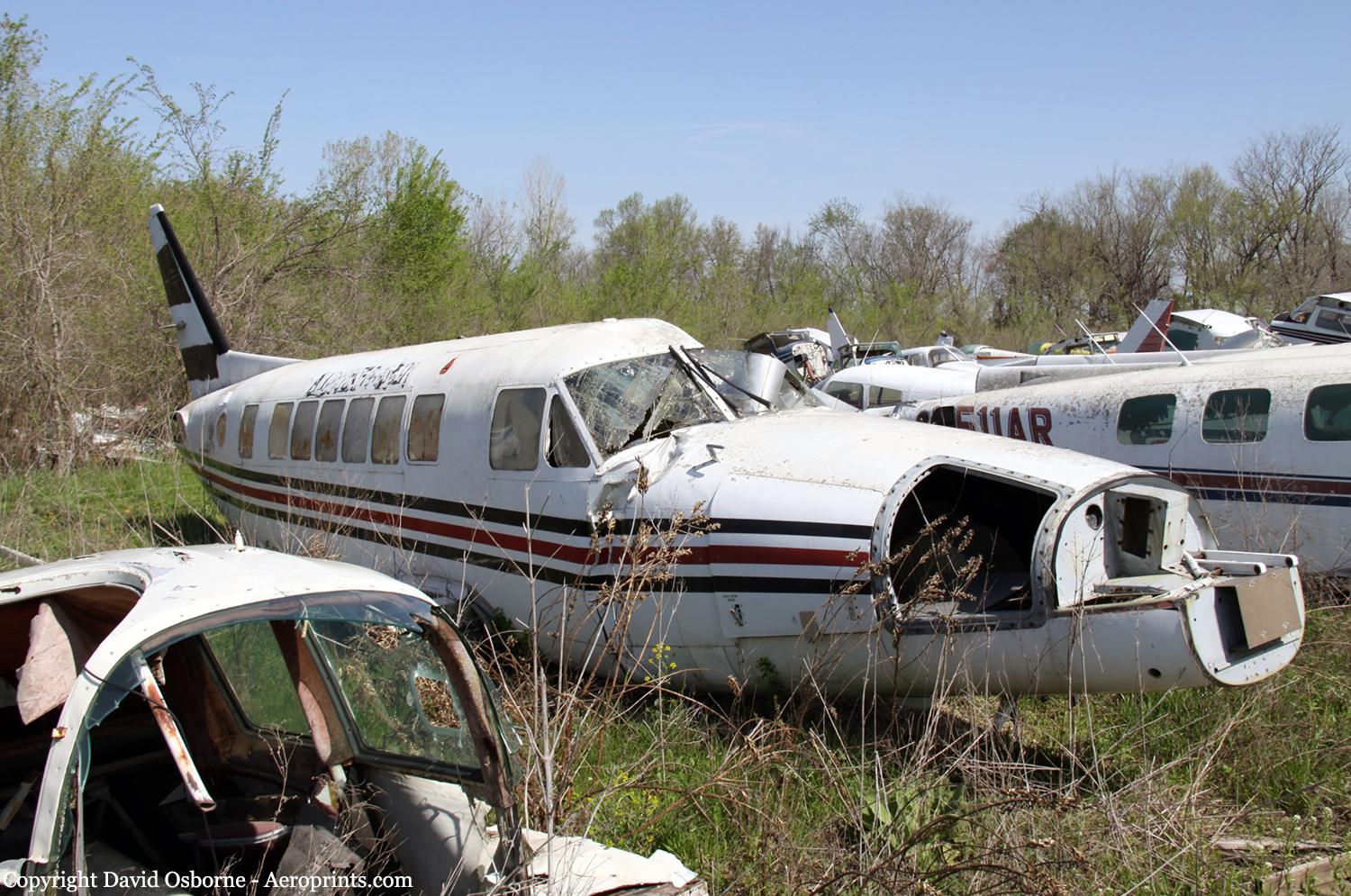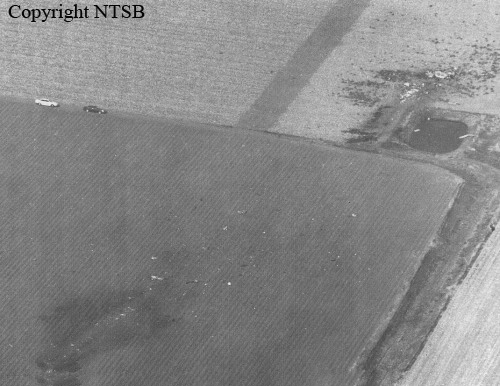Country
Crash of a Beechcraft 99 Airliner in Liège: 2 killed
Date & Time:
Jun 30, 1999 at 0441 LT
Registration:
D-IBEX
Survivors:
No
Schedule:
Luton - Frankfurt
MSN:
U-45
YOM:
1968
Flight number:
EXT114
Crew on board:
2
Crew fatalities:
Pax on board:
0
Pax fatalities:
Other fatalities:
Total fatalities:
2
Circumstances:
En route from Luton to Frankfurt, while on a night cargo service (flight EXT114), at an altitude of 11,000 feet, the crew declared an emergency after both engines failed almost simultaneously. The crew was cleared to divert to the nearest airport that was Liège-Bierset. After being cleared to descend to FL60, the crew contacted Brussels ATC and was vectored for an approach to runway 23L. Due to the critical situation, the crew requested a straight-in approach. While descending to the airport, the aircraft crashed in a wooded area located near Seraing, about nine km southeast of the airport. The aircraft was destroyed by impact forces and a post crash fire and both pilots were killed.
Probable cause:
Both engines failed in flight due to poor maintenance. The following contributing factors were identified:
- The crew failed to follow the operator published procedures,
- There was a misunderstanding between the crew and ATC,
- Lack of visibility due to night conditions.
- The crew failed to follow the operator published procedures,
- There was a misunderstanding between the crew and ATC,
- Lack of visibility due to night conditions.
Final Report:

Crash of a Beechcraft C99 Airliner near Bishop: 1 killed
Date & Time:
Feb 12, 1999 at 1030 LT
Registration:
N205RA
Survivors:
No
Schedule:
Tonopah - Bishop
MSN:
U-205
YOM:
1983
Crew on board:
1
Crew fatalities:
Pax on board:
0
Pax fatalities:
Other fatalities:
Total fatalities:
1
Captain / Total hours on type:
692.00
Aircraft flight hours:
20522
Circumstances:
The airline transport pilot was repositioning the Beech C99 turboprop cargo hauler on a 73-mile trip without cargo. The pilot had been flying this route for some time and this was his last trip before upgrading to a larger aircraft and route. He told friends that he would take pictures of the scenic parts of the route on his last trip. Three witnesses reported seeing the airplane flying west at low altitude. Two of the witnesses were local ranchers who saw the airplane enter the White Mountains near Trace Plumas Canyon about 7,000 to 8,000 feet msl. White Mountain is 14,246 feet, tapering off north to 13,559 feet and south to 11,285 feet msl. The airplane was reported missing and 2 days later located on White Mountain about 9,400 feet msl. The company flight planned route is 15 miles south of the accident site through Westgard Pass, about 7,291 feet msl. Examination of the low energy impact and the subsequent recovery inspection failed to reveal any mechanical issues.
Probable cause:
The pilot's failure to follow procedures and directives and his failure to maintain clearance from mountainous terrain.
Final Report:
Crash of a Beechcraft 99A Airliner in Missoula
Date & Time:
Oct 17, 1998 at 0230 LT
Registration:
N299GL
Survivors:
Yes
Schedule:
Billings - Missoula
MSN:
U-102
YOM:
1969
Flight number:
AIP5010
Crew on board:
2
Crew fatalities:
Pax on board:
0
Pax fatalities:
Other fatalities:
Total fatalities:
0
Captain / Total hours on type:
667.00
Aircraft flight hours:
39685
Circumstances:
While flying a night visual approach, the co-pilot flared too high above the runway. As the aircraft floated down the runway, the speed decreased, and the pilot-in-command took control. Because he felt the aircraft was approaching a stall, he initiated a go-around. During the attempted go-around, the pilot-in-command found it necessary to keep both hands on the control wheel due to the fact that the aircraft had been trimmed to the full nose-up position during the landing flare. Even with both hands on the control wheel, the aircraft became very difficult to control. Although the co-pilot moved the throttles to maximum power and began retraction of the flaps, the pilot-in-command's remedial action had occurred too late to successfully execute the go-around. It was later discovered that during the operator's initial training, both crew members had been taught to apply full nose-up trim after crossing the runway threshold and reducing the power to idle. This action, which the operator eliminated from the landing sequence procedure after this accident, was inconsistent with the instructions in the Beech 99 Pilots Operating Manual.
Probable cause:
The pilot-in-command's delayed remedial action in response to the co-pilot's improper landing flare, and the co-pilot's application of excessive (full nose-up) trim during the landing flare as taught in the operator's initial aircrew training program. Factors include the co-pilot's improper flare and his lack of total experience in this type of aircraft.
Final Report:



Crash of a Beechcraft 99 Airliner in Webequie
Date & Time:
Dec 4, 1997 at 0200 LT
Registration:
C-GXBE
Survivors:
Yes
Schedule:
Fort Hope - Webequie
MSN:
U-160
YOM:
1974
Flight number:
BLS310
Crew on board:
2
Crew fatalities:
Pax on board:
8
Pax fatalities:
Other fatalities:
Total fatalities:
0
Circumstances:
Bearskin Flight 310, a Beech 99, was inbound to Webequie Airport (YWP) on a scheduled passenger flight from Fort Hope Airport (YFH). The flight crew completed an approach to Webequie based on visual cues, GPS and ADF. The flight crew lowered the landing gear about three miles from the runway and set full flap on final approach. The captain reportedly initiated the flare at about 50 feet and the nose of the aircraft came up, but the descent was not arrested before the aircraft struck the runway. The aircraft's wings and tail reportedly had a small amount of residual ice at landing. Winds on the surface were northwest at five to ten knots but the winds aloft were reported to be easterly at up to 50 knots. Examination of the aircraft at the terminal building led the crew to call company maintenance for an inspection. Inspection of the aircraft revealed that the left wing spar was broken, the left wing skin was wrinkled and the left engine was drooping. There were no injuries reported.
Crash of a Beechcraft 99 Airliner in Fort Chipewyan
Date & Time:
Dec 6, 1996 at 1945 LT
Registration:
C-GSFP
Survivors:
Yes
Schedule:
Fort McMurray – Fort Chipewyan
MSN:
U-43
YOM:
1968
Flight number:
3T103
Crew on board:
2
Crew fatalities:
Pax on board:
12
Pax fatalities:
Other fatalities:
Total fatalities:
0
Circumstances:
On final approach to Fort Chipewayn Airport, the twin engine aircraft was unstable and rolling left and right. Upon landing, the right propeller struck the runway surface. The right engine partially torn off and the right wing was severely bent. The aircraft came to a halt few dozen metres further. All 14 occupants escaped uninjured.


Crash of a Beechcraft C99 Airlines near Avenal: 1 killed
Date & Time:
Nov 16, 1994 at 0240 LT
Registration:
N63995
Survivors:
No
Schedule:
Burbank - Oakland
MSN:
U-178
YOM:
1981
Crew on board:
1
Crew fatalities:
Pax on board:
0
Pax fatalities:
Other fatalities:
Total fatalities:
1
Aircraft flight hours:
20031
Circumstances:
The pilot was on an IFR flight plan level at 10,000 feet msl in VFR conditions. The ATP rated pilot was the sole occupant, and there was no autopilot installed in the Beech C99 Airliner. About 10 minutes after a hand-off from Los Angeles center to Oakland center was acknowledged, radar contact was lost at 0239 hours. A review of the radar data revealed that over the last 4 minutes the airplane's altitude increased to 10,500 feet, then it started a left descending turn with a maximum diameter of about 2.1 nm. The last radar returns indicate the airplane continuing the left turn and descending through 5,600 feet msl, with a descent rate of about 18,000 feet per minute. There was no evidence of a mechanical malfunction of the aircraft, engines, or propellers.
Probable cause:
Loss of aircraft control at night by the pilot for unknown reasons.
Final Report:
Crash of a Beechcraft C99 Airliner near Shelton: 2 killed
Date & Time:
Apr 28, 1993 at 2350 LT
Registration:
N115GP
Survivors:
No
Schedule:
Grand Island - Grand Island
MSN:
U-228
YOM:
1986
Crew on board:
2
Crew fatalities:
Pax on board:
0
Pax fatalities:
Other fatalities:
Total fatalities:
2
Captain / Total hours on type:
2200.00
Copilot / Total hours on type:
44
Aircraft flight hours:
6962
Circumstances:
The flight was a part 135 six-month proficiency check for the pilot in the left seat. Both pilots were check airmen for the commuter air carrier. The flight took off at 2343 after cessation of company revenue operations. The cockpit voice recorder recorded conversation of both pilots discussing aerobatics. The pilot in the left seat started to describe the performance of a prohibited maneuver (apparently a barrel roll). The recording ended before description of the maneuver was completed. The airplane impacted in a nose level attitude with the left wing slightly down. There was evidence the maneuver was performed at an altitude insufficient to assure recovery of the airplane. A filled out grade sheet for the flight being flown was found in the check airman's mailbox. Both pilots were killed.
Probable cause:
The deliberate disregard for the federal aviation regulations, gp express procedures, and prudent concern for safety by the two pilots in their decision to execute an aerobatic maneuver during a scheduled check ride flight, and the failure of gp express management to establish and maintain a commitment to instill professionalism in their pilots consistent with the highest levels of safety necessary for an airline operating scheduled passenger service.
Final Report:

Crash of a Beechcraft C99 Airliner in Anniston: 3 killed
Date & Time:
Jun 8, 1992 at 0853 LT
Registration:
N118GP
Survivors:
Yes
Schedule:
Atlanta - Anniston - Tuscaloosa
MSN:
U-185
YOM:
1982
Flight number:
8G861
Crew on board:
2
Crew fatalities:
Pax on board:
4
Pax fatalities:
Other fatalities:
Total fatalities:
3
Captain / Total hours on type:
24.00
Copilot / Total hours on type:
90
Aircraft flight hours:
9725
Aircraft flight cycles:
11109
Circumstances:
This was the first day on duty in the southern region operation for both pilots. In addition, they had never flown together. During the flight, the flight crew lost awareness of their airplane's position, erroneously believed that the flight was receiving radar services from ATC, and commenced the approach from an excessive altitude and at a cruise airspeed without accomplishing the published procedure specified on the approach chart. The crew believed that the airplane was south of the airport, and turned toward the north to execute the ILS runway 05 approach. In actuality, the airplane had intercepted the back course localizer signal, and the airplane continued a controlled descent until it impacted terrain. The captain and two passengers were killed while the copilot and two other passengers were seriously injured.
Probable cause:
The failure of senior management of GP Express to provide adequate training and operational support for the startup of the southern operation, which resulted in the assignment of an inadequately prepared captain with a relatively inexperienced first officer in revenue passenger service, and the failure of the flightcrew to use approved instrument flight procedures, which resulted in a loss of situational awareness and terrain clearance. Contributing to the causes of the accident was GP Express' failure to provide approach charts to each pilot and to establish stabilized approach criteria. Also contributing were the inadequate crew coordination and a role reversal on the part of the captain and first officer.
Final Report:




